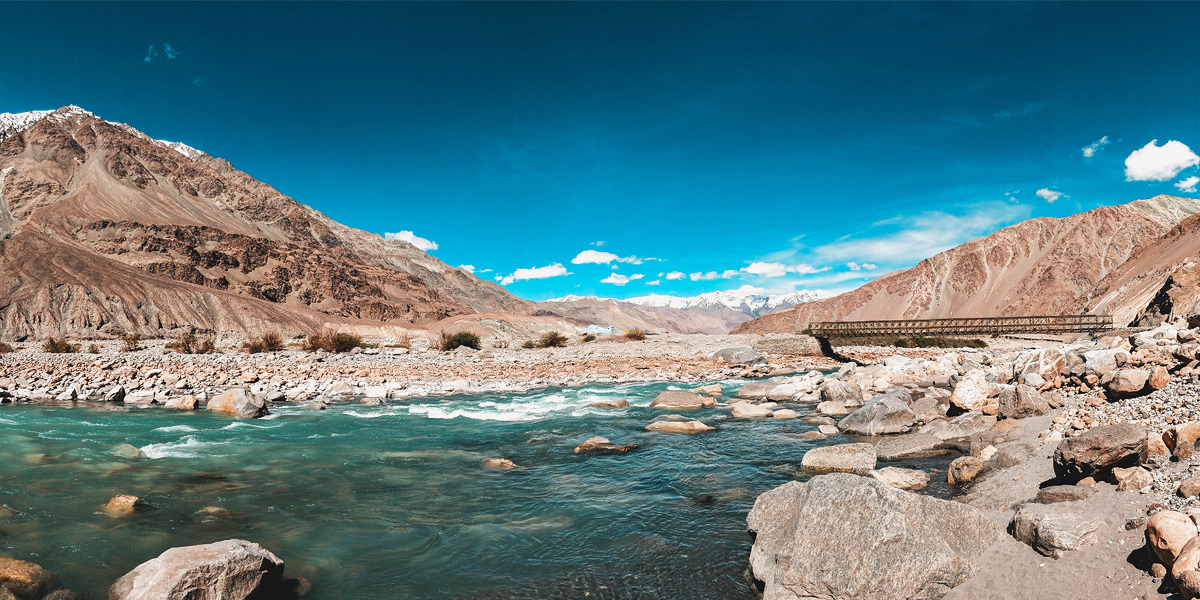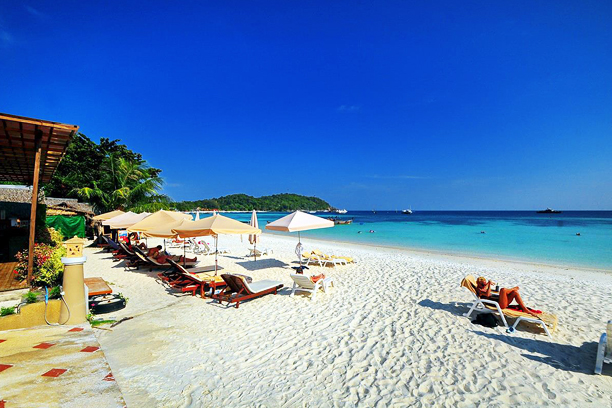Ladakh
Ladakh’s tranquil, turquoise lakes, adventure sports like river rafting and trekking, and the numerous Buddhist monasteries, make it among the most unique travel destinations in India.


Ladakh is a mountainous region and a Union Territory in the north India. A surreal landscape surrounded by the sky-piercing peaks of the snow-capped Himalayan, Zanskar and Karakoram ranges, and adorned with crystal waters of the Shyok, Zanskar and Indus rivers, Leh is the main city in the Ladakh region, one of the coldest deserts in the world. Perched at a height of over 11,000 ft above sea level, the city of Leh is a haven of adventure sports. Its rugged terrain and gushing rivers provide ripe opportunities for activities like trekking, river rafting, camping, mountain climbing and biking.
Earliest inhabitants of the region were Indo-Aryans. Ladakh was under the rule of Kushana Empire in the 1st century AD and Buddhism spread via Kashmir and eventually to western Tibet. In the medieval period, due to several Muslim invasions several Balti people converted to Islam. Dogra Zorawar Singh invaded Ladakh in 1834 and annexed the area to the Sikh Empire. The region was divided into two district of Leh and Kargil in 1979.
This lake is situated at an altitude of 14,100 ft. in the Eastern sector of Ladakh, at a distance of 150 km from Leh across Changla pass (17,000ft.). This lake is one of the largest and most beautiful natural brackish lake in the country.
Famous for its white sand deserts and double-humped camels, Nubra Valley is certainly one of the best places to visit in Ladakh. Not just the scenic slopes of Karakoram range but also the confluence of Shyak and Siachen rivers is what makes Nubra valley an exquisite voyage!
The pass is a gateway to the Nubra as well as Shyok valley and is one of the most elevated motorable terrains worldwide. Interestingly, the roads were opened in 1988 for vehicles to pass through.
Set amidst craggy and stark mountains, the pristine white edifice of Shanti Stupa is a splendid work of art. Beautiful Buddhist murals and golden artwork interspersed with a gorgeous facade make this stupa an attractive tourist stopover.
The Chadar Trek can only be enjoyed during the winter months in Ladakh. It gets its name from the fact that, during winter, the rivers freeze and form a blanket of ice that forms the main terrain of this trek. Throughout the adventure, trekkers are walking on precarious icy formations, staying in caves filled with stalactites and stalagmites and encountering other snowy landscape.
Perched at a height of 13,154 ft, Zanskar Valley is a semi-arid region nestled in the northern flank of the Great Himalayas. What draws tourists to this area are the beautiful snow-capped mountains here, pleasant weather, Zanskar's sparkling water bodies and a lush landscape. The valley lies 105 km away from Leh and is a hotspot for adventure sports like trekking, paragliding, water rafting, among others.
Have you ever come across snow leopards? Well, Ladakh's Hemis National Park is considered to be the capital of Snow Leopard of India. What makes this national park exceptional is the fact that aside from inhabiting the famed snow leopard, it is also the only national park in the northern regions of the Himalayas.
The main town, very picturesque. Majority of population is Buddhist. An excellent base for exploring Ladakh. Good hotels, guest houses and restaurants. Key to accessing the Nubra Valley via Khardong-lha world highest road. Choglamsar - a village with a large Tibetan community almost close enough to Leh to be a suburb.
Picturesquely located in secluded, breathtakingly beautiful Rupshu Valley, the high-altitude Tso Moriri Lake is less than 250 kilometers southeast of Leh. Flanked by lofty mountains, this serene lake is about 4,000 meters above sea level. Tso Moriri is approximately 29 kilometers long and up to 8 kilometers wide. Tso Moriri attracts a range of wildlife, including migratory birds, marmots and rarely the Tibetan wolves.
In your travels around Leh-Ladakh, you will come across fascinating sights which arouse your curiosity to no end. One such sight attraction is Magnetic Hill, the place where gravity takes a backseat. Lying at a distance of around 30 km from Leh, the Magnetic Hill is marked by a yellow signboard which reads “The Phenomenon That Defies Gravity”. It also instructs you to park your vehicles in the box marked with a white point on the road, which is known as the Magnetic Road. When parked at the indicated spot, vehicles begin moving forward at a speed of almost 20km/h.
Magnetic Hill lies on the Leh-Kargil-Srinagar National Highway in the Trans-Himalayan region. To the east of the Magnetic Hill flows the Sindhu River, making the surroundings a photographer’s delight.
Ladakh’s cuisine, while greatly influenced by Tibetan culture, still has a voice of its own. You must absolutely taste Thupka, a delicious noodle-soup made using boiled vegetables, chunks of chicken, pork, and meat. People here are friendly and when they invite you for a cup of tea, don’t refuse but also don’t expect a typical cup of steaming brew. Ladakh is famous for its butter tea – a pink coloured, fragranced liquid made from tea leaves, butter, salt and water. Quite unexpected, right? Momos might be popular in the rest of India today but they originated here, and you must sample them. Simple daily fare, these are made from flour and water, and come stuffed with minced meat, vegetables or cheese.
You will find articles in Ladakh that are inspired by Tibetan culture since the area is located quite close to Tibet, and most people living out there are Buddhists. Tourists usually shop for items like Tibetan Handicrafts, Jams made of Apricots, Pashmina Shawls, Jewelry made of silver, and many more.
Undoubtedly, summer is when tourism in Ladakh is most exciting as the city is buzzing with more activity. The district explodes with colours and warmth. You have more access to every corner and the beauty of the place is simply breathtaking.
Winter is from mid-October to March when the temperatures drop to sub-zero, and most hotels and sightseeing places are closed. Summer, or the peak tourist season, begins from April and goes on till July. You can also visit from mid-September to mid-October when the true beauty of Ladakh can be experienced.
The Kushok Bakula Rimpochee Airport in Leh is connected to Mumbai, New Delhi, Jammu, Srinagar, and Chandigarh by regular flight services.
Jammu and Kashmir State Road Transport Corporation and Himachal Road Transport Corporation provide regular buses to Leh. It can be accessed from Srinagar (about 421km) and Manali (about 471km) by these bus services.
Leh doesn’t have a railway station. Visitors can take trains to the railway stations at Jammu Tawi (about 700 km), Pathankot (about 765 km), and Chandigarh (about 782 km). Several buses, taxis and private car services ply between these stations and Leh.

Book with Us and Get Best Deals in
*Terms and Conditions applied